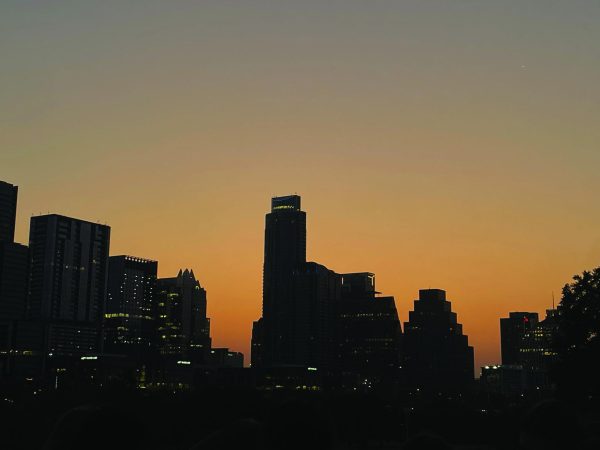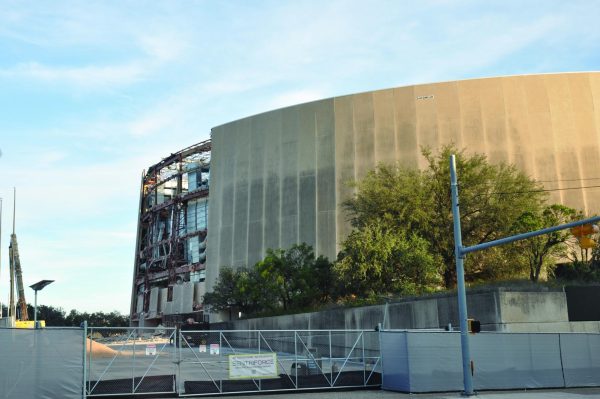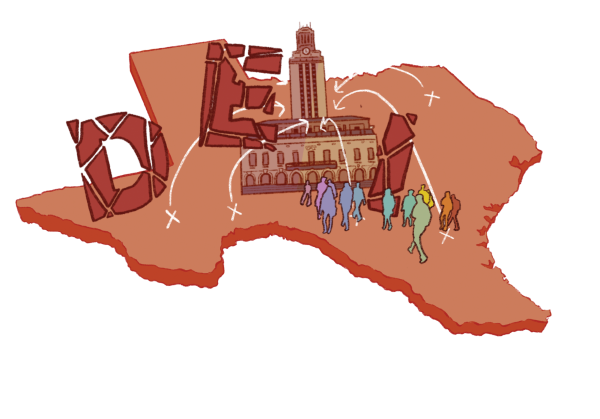Mental Health and its Potentially New Policing Policies
December 17, 2021
In 2018, Austin was the city with the highest rate of fatal police shootings in relation to people experiencing mental health crises, according to KUT. A year later, the Human Rights Clinic at the University of Texas School of Law and the Austin Community Law Center conducted a report that said out of the 24 people killed in police shootings in Austin from 2010 to 2016, at least one-third had a confirmed mental health condition.
The city and Texas have been recently altering their law enforcement officers’ response training for these scenarios, according to Kathy Mitchell, policy coordinator for criminal justice reform group Just Liberty. Mitchell began her line of work after volunteering for other nonprofits, such as the American Civil Liberties Union (ACLU), where she became a member of the ACLU of Texas Board for over a decade. According to Mitchell, several cities across the country have been trying to change their policing systems, using methods ranging from taking police out of the equation completely to adding more police officers.
“Quite recently, Dallas had a single police sector, where they changed how they were doing first response, and they basically had the police officer drive the car, and stay in the car,” Mitchell said. “The alternative responders, the mental health professionals, were the ones who got out of the car, and if they needed that police officer, he was right there. But for the most part, they did not need him.”
This model, known as the Meadows Model, was developed in Dallas by the Meadows Foundation, which has been advocating for mental health in Texas since 1948. In Austin, another model is being pursued in which those needing mental health care will be connected with a professional via tablet or telephone. However, this system is not without problems of its own, according to Mitchell.
“We have had issues scaling that appropriately,” Mitchell said. “At this point, we are diverting more calls than we used to, but that still relative to the need, it’s still a relatively small engagement, and we have to scale that and we have to do some work to put in place all of the staffing we need to be able to scale it.”
Blair Lee, coordinator of outreach and communications for the Center of Justice Research, stresses the importance of decriminalizing mental health. The Center of Justice Research, based in Houston, Texas, conducts unbiased research on criminal justice reform through evidence-supported solutions and engagements.
“Mental Health has not been taken seriously in this country,” Lee said. “And when we stop criminalizing it, then we will see the seriousness of it.”
Lee also added that both the decriminalization of drug use and mental health go hand in hand, and he believes that they are both needed for real change to occur. Since 2018, Austin City Council members, such as District 4 member Greg Casar, have been pushing to stop possession of marijuana arrests in Austin, and have not yet been successful until the last quarter of 2020, according to the Austin Chronicle.
“When someone is arrested for marijuana, or someone is arrested for cocaine, what do we do? We call law enforcement,” Lee said. “When you think about it from a service level, we’re calling law enforcement and arresting someone because of something that they’re putting in their body. So nothing is going to happen. The infrastructure will not get set up until we stop criminalizing mental health.”
Currently, law enforcement officers receive 40 hours of training in order to respond to mental health crises, according to Matthew Lovitt, a peer policy fellow at the National Alliance on Mental Illness (NAMI). In those 40 hours, NAMI affiliates sometimes give presentations to law enforcement to educate them about various mental health conditions, and one officer typically is designated to deal with the crises.
“In addition to that standard 40 hours there’s an additional designation called the mental health officer who has to take an additional 40 hour training,” Lovitt said. “They obviously get more extensive, more rigorous [training] and these officers, although in short supply, are generally better equipped to support people who are experiencing mental health concerns than just your regular police officer.”
Proposition A, a new proposition that was recently declined by the voters of Austin, pushed to increase the amount of law enforcement officers in Austin, as well as more training for law enforcement in terms of responding to calls about mental health. With a growing public interest in police training, as well as different forms of response being created, officers have begun voicing their preference, according to Mitchell.
“The majority of police officers that I speak to about this explicitly say, ‘You know, I’m on the wrong tool for the job,’” Mitchell said. “Most of the time, I’m sitting in this driver’s seat, but I’d rather it be someone else who was here helping this guy.”
Although the promise of more training brought appeal to some voters, the proposition was overall not a good idea, according to Mitchell. Mitchell added that the main issue for her was that the bill focused money that could have been used for other emergency services, better equipped to handle mental health crises into the police department instead.
“Our EMS system is underfunded, and we should be putting more money into community health paramedics,” Mitchell said. “And that is part of why prop A was just a terrible idea. Because it forced voters an up and down vote on one type of staffing for our emergency response system, when in fact, this is all about trade offs.”
According to Lee, the term “defund the police” has gained more political popularity than ever. In 2020, the Austin City Council voted to cut the Austin Police Department’s $434 million budget by one third. In 2021 however, the Austin Police Department’s budget was approved to increase to $4.5 billion dollars, according to KXAN.
“Ever since George Floyd, defunding the police has become politicized,” Lee said. “And people hear this narrative defund the police, and people are like, ‘What the heck does that mean?’ Some people think that it means that we’re going to take all funding from police officers, and that’s not at all what defunding the police means. Defunding the police means that we want to make sure that the funding that police officers received is in the right places.”
Lovitt agrees that defunding the police has become a highly contested political issue. He also says that the increased awareness has made systemic change more challenging.
“I think just how the issue has been publicized, or at least covered in the media, and politicized to a large extent has kind of stalled any progress,” Lovitt said. “Just because from a political perspective, or policy perspective, trying to work with conservative policymakers who are beholden to their constituents, who are presumably largely conservative as well, and to engage them is unfortunately sometimes a non-starter because police is a very divisive issue, and unfortunately, more conservative legislators and their constituents are very outspoken in their opposition to anything that might resemble defunding the police.”
Across the nation, law enforcement offices have been understaffed, especially in Houston which has caused issues with funding, Lee added. He also mentions the importance of community policing, a strategic method based on community built relationships, and regular officers visiting certain parts of their city, according to Lee.
“Houston in particular, where we’re at, is super understaffed as well to now, and we need to definitely make sure that the police are funded, we need to make sure that there’s more police officers on the beat,” Lee said. “But something that goes hand in hand with that it’s something called community policing. Community policing is the first big step on how we can address the staffing shortages that law enforcement officers are receiving, that they’re experiencing.”









